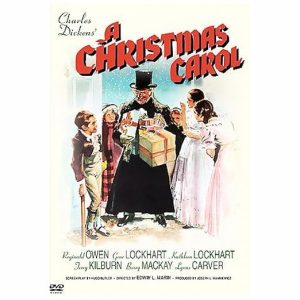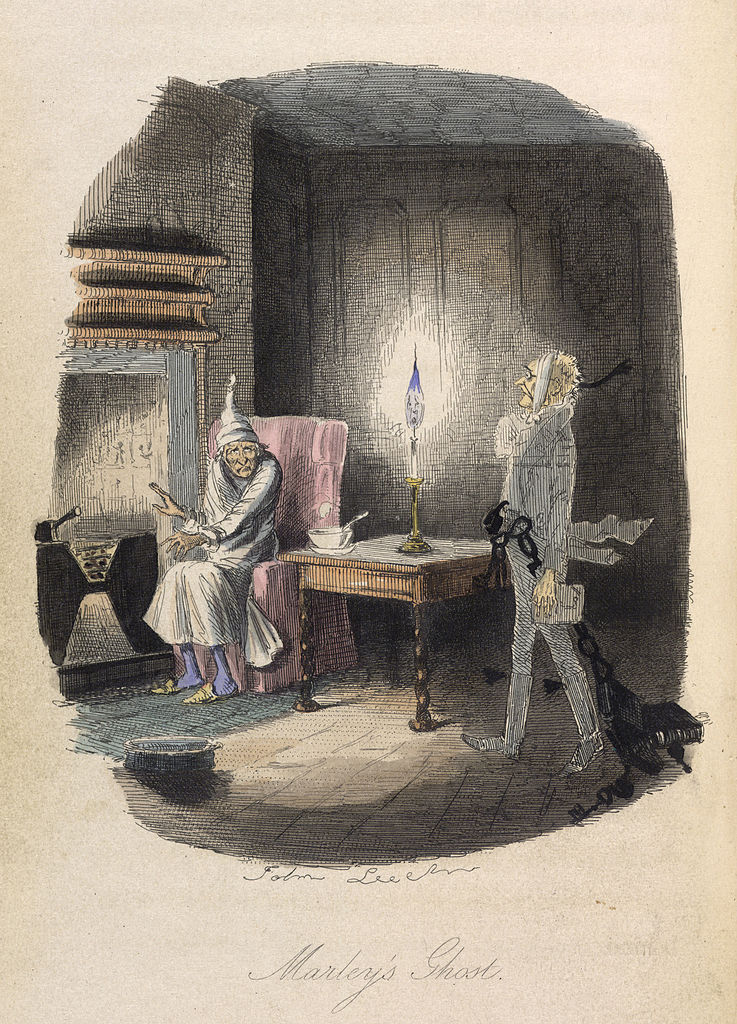
Image from 1843 edition of A Christmas Carol, illustrated by John Leech
Source: British Library via Wikimedia Commons
Public Domain
On 19 Dec 1843 noted writer Charles Dickens novella A Christmas Carol was published by Chapman & Hall. The book came at a time when Christmas was fading but at the same time people were rediscovering Christmas traditions and exploring new ones (such as Christmas cards and Christmas trees). The story relates how Ebenezer Scrooge, a miserly man, who receives the ghost of his dead partner along with Christmas Past, Present, and Yet to Come. The visitations changed Scrooge into a warmer, forgiving man and the book sold out all its initial copies on Christmas Eve.
The story has become a favorite at Christmas time owing to its theme of transformation. While some academics argue about whether his story was secular or a religious allegory, the story alludes to a higher power at work to help Scrooge reflect on his life and to make changes. Scrooge shows everything wrong about the age-of acquiring money for its own sake and nothing else. He showed no empathy nor compassion for the plights of his fellow men and women wanting only to increase his wealth at the expense of others. One can be lulled into thinking though that Scrooge is just a two-dimensional character at first. As the story progresses, we learn of his early years, his being at school alone, of his lovely sister who brings him home, and the joy of working with old Fezziwig. And then he changes, slowly but steadily into the man we see at the beginning and losing the woman who loved him in the process. And we see as he reflects back upon his past, he starts regretting ill-treating his nephew and his clerk Bob Cratchit.
The story is of redemption, but not done in the modern syrupy way you see now in terribly done holiday movies of today. There are hard truths that Scrooge has to face about himself, and his choice is simple: continue as he is now and face a terrible fate or change to becoming more caring and joyful in his life. We also get to see the joy of Christmas being celebrated both in the Cratchit house and later with his nephew Fred. Despite not having a lot of money, the Cratchit’s have a wonderful holiday together. Christmas is depicted as a time for families, children, and to care about our fellow brothers and sisters. Dickens wanted to relate in his book that poverty was no small thing and that we needed to help those in need rather than ignoring them (especially children).
Christmas, like much of the world in Dickens time, was undergoing a major change. The observance of the Nativity of Christ was important to the faithful. Yet while it was a time of celebration, it was a simpler celebration. The religious part took place in church while food and drink were at home. Some took the partying to excess causing social problems. General George Washington famously crossed the Delaware River on Christmas Day in 1776 knowing that after a day of partying the German soldiers would be unable to fight. The Reformation had wiped out Christmas traditions in many places, and the Puritans had banned its celebration in England and later in the areas they settled in North America. It was not a public holiday in the United States (except in states that made it a holiday) or much of Europe.
The social changes brought by the dramatic shift from agrarian to industrial society made people want to look for a deeper meaning to things. And Christmas was ripe to be revitalized after being so low-key or ignored for a long time, or a time for wild partying. Dicken’s depiction of the day was family, church, mistletoe and holly, charity, and food. After the book came out, more traditions would be created from Christmas carols, St. Nicholas, Christmas cards and trees. And as many people wanted to celebrate the day with family, it became eventually a national holiday in just about every country in Europe, North and South America, and parts of the far east (Russia mostly). And reading A Christmas Carol has become a Christmas tradition as well. Dicken’s was at the cusp of change when it came to Christmas. He wrote great books before and after this one, but many remember him chiefly for the story of redemption of Ebenezer Scrooge.
Adaptations
There are many adaptations that have been made from plays to movies. Here is a list of those you might want to watch. Almost all the movies change the story in varying ways but try to keep faithful to the overall story.
Scrooge (1913)
One of the early silent movies starring Seymour Hicks. It is one of the few that shows Bob Cratchit sitting by the body of Tiny Tim.
This version stars Reginald Owen who plays Scrooge well. The story cuts out a lot of the sadder parts of the story and alters the story in other ways (Cratchit is fired early in the movie). Still a good movie to watch for the excellent acting.
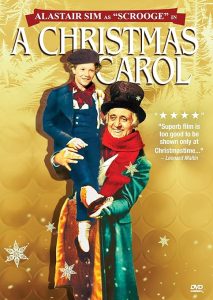 Scrooge (1951), re-titled A Christmas Carol
Scrooge (1951), re-titled A Christmas Carol
This one starring Alistair Sim is considered by many to be the best. Sim really nails Scrooge, and it is closer to the original in some ways. Shows a bit of his life not covered in the book or other movies to show how became so mean and miserly.
A Christmas Carol (1984)
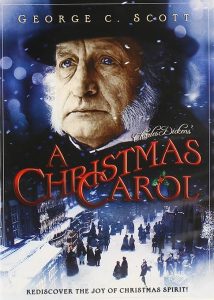 This version stars George C. Scott as Scrooge. This was a made for television unlike the others above. It was filmed on location in the historic town of Shrewsbury in Shropshire, England lending it an authentic look. Scott’s depiction is not as harsh in tone as Alistair Sim’s depiction, but just as ruthless and unbending in his ways. It has a good cast as well with David Warner playing Bob Cratchit. It has become a favorite and seen on Hallmark and AMC channels during Christmas. Scott’s portrayal got him a nomination for an Emmy for Outstanding Lead Actor in a Limited Series or a Special. The combination of a great supporting cast and Scott’s performance as Scrooge makes this adaptation better than Alistair Sim’s version.
This version stars George C. Scott as Scrooge. This was a made for television unlike the others above. It was filmed on location in the historic town of Shrewsbury in Shropshire, England lending it an authentic look. Scott’s depiction is not as harsh in tone as Alistair Sim’s depiction, but just as ruthless and unbending in his ways. It has a good cast as well with David Warner playing Bob Cratchit. It has become a favorite and seen on Hallmark and AMC channels during Christmas. Scott’s portrayal got him a nomination for an Emmy for Outstanding Lead Actor in a Limited Series or a Special. The combination of a great supporting cast and Scott’s performance as Scrooge makes this adaptation better than Alistair Sim’s version.
A Christmas Carol (1999)
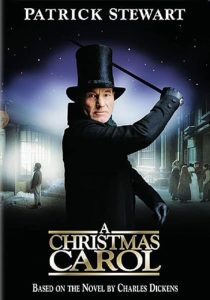 A version based on Patrick Stewart’s one man play, but with a full supporting cast, it was inspired by the Sim movie and shows a lot of the grimness of the story. Stewart’s depiction of Scrooge is even more harsh than what Sim or Scott did. Solidly acted but one may be put off by the harsh and grim version of this Scrooge.
A version based on Patrick Stewart’s one man play, but with a full supporting cast, it was inspired by the Sim movie and shows a lot of the grimness of the story. Stewart’s depiction of Scrooge is even more harsh than what Sim or Scott did. Solidly acted but one may be put off by the harsh and grim version of this Scrooge.
The Muppet Christmas Carol (1992)
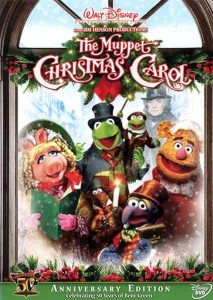 This musical starring Michael Caine and all the Muppet favorites is funny and amusing at times. It is heartwarming and enjoyable on its own terms. Michael Caine delivers a great performance as Scrooge. It is mainly directed at kids, so they will enjoy it best. Adults may find it tedious at times, but the payoffs are the wonderful musical numbers and how the Muppet characters interact during the story. Especially when the Ghost of Christmas Future appears. It sends our narrator running for cover until the scene is over.
This musical starring Michael Caine and all the Muppet favorites is funny and amusing at times. It is heartwarming and enjoyable on its own terms. Michael Caine delivers a great performance as Scrooge. It is mainly directed at kids, so they will enjoy it best. Adults may find it tedious at times, but the payoffs are the wonderful musical numbers and how the Muppet characters interact during the story. Especially when the Ghost of Christmas Future appears. It sends our narrator running for cover until the scene is over.
Titanic News Channel is a participant in the Amazon Services LLC Associates Program, an affiliate advertising program designed to provide a means for sites to earn advertising fees by advertising and linking to Amazon.com.

